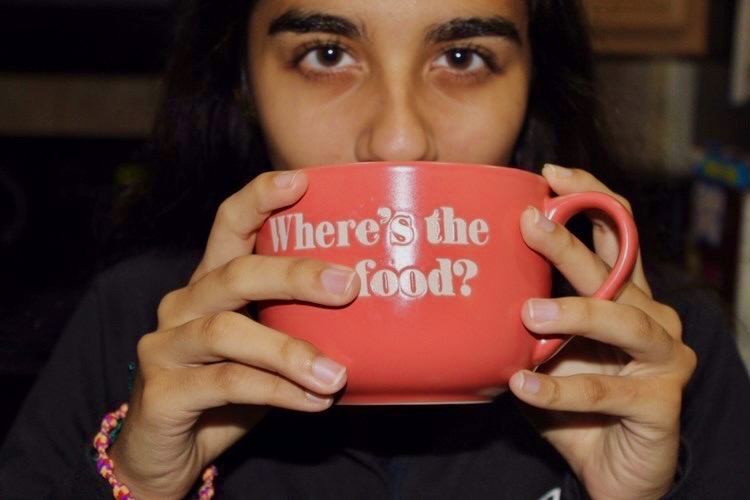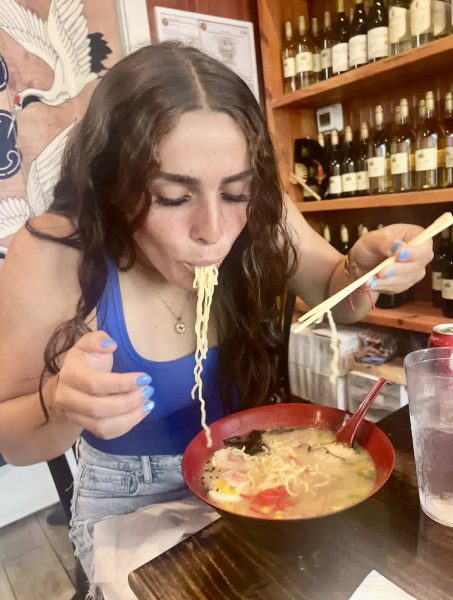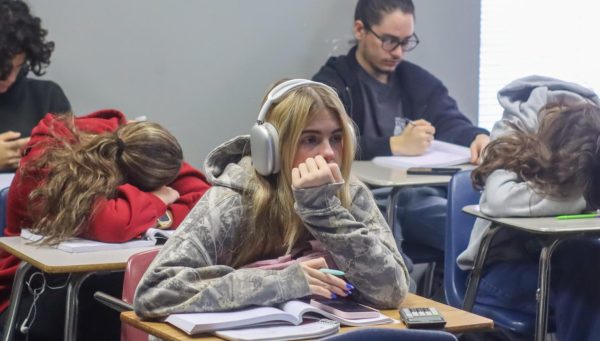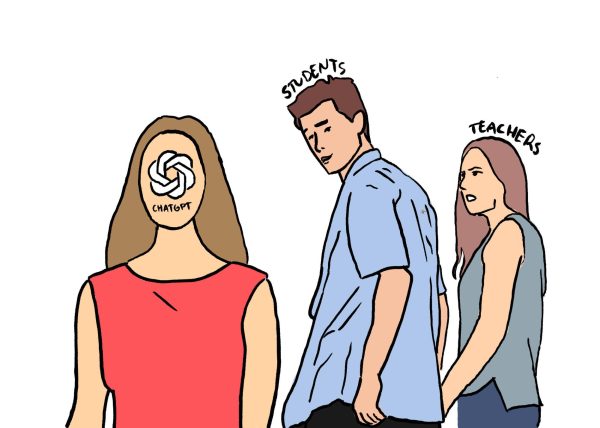Caffeine craze
To many people, coffee is more than just a drink
photo by Charissa Thompson
Junior Charissa Thompson drinks coffee regularly, to maintain energy levels during the school year. She began relying on the beverage much more after entering high school.
As senior Izzy Pacheco entered her kitchen to brew herself a cup of coffee, she sighed: the coffee machine was broken. Abandoning the Keurig, Pacheco hopped in the car and drove to the nearest Starbucks for the day’s caffeine fix — something that she, and many other teenagers, have grown unable to live without.
In 2017, the U.S. National Coffee Association (NCA) reported that 37% of those between ages 13 to 18 drink coffee daily, which is a sharp leap from 23% in 2014. Among countless others, senior Morgan VanHoozier relies on the beverage almost every day.
“I used to only drink coffee like once or twice a week, but since school started I’ve drank more,” VanHoozier said. “I need something to wake me up so I can pay attention.”
Between homework and extracurriculars, it may feel challenging to not rely on coffee. On top of a regular school day, junior Charissa Thompson regularly goes to cross country practice, which she finds can become exhaustive over time. She usually has to drink a few cups of coffee a week, but when things get especially stressful it becomes a daily occurrence.
“There are some days where I’m just drained, and coffee helps me get through the day,” Thompson said. “[It] replaces naps for me.”
The caffeinated drink has been a saving grace for students in times of desperation, too. Senior Riley Boice credits surviving some of his most memorable experiences with robotics competitions to coffee.
“We would stay up till 4 in the morning preparing for the competition at 7,” Boice said. “I remember drinking over 8 cups [of coffee].”
With the drink becoming so popular, particularly with the rise of kingpin corporations like Starbucks and Dunkin’ Donuts, people tend to forget that caffeine is still a drug that should not be ingested at an unhealthy rate. Coffee is known to enhance problems such as sleep deprivation or heart issues, and if one becomes too reliant on it, a lack of caffeine may trigger an onslaught of headaches and an inability to concentrate, among other symptoms.
The Mayo Clinic states that consuming more than 400 milligrams worth of caffeine in a day is considered harmful for adults, but experts believe that it can be especially harmful for youth. In 2014, the University of Zurich Children’s Hospital claimed that too much caffeine can disrupt essential brain development in children. Those aware of these consequences, including sophomore Julia Lavoie, try to moderate how much they consume in response.
“If I drink too much [coffee], sometimes I get really anxious, so I’ll try to take weeks where I don’t drink it as much,” Lavoie said.
Despite the adverse effects coffee can have, it is still central to many people’s lives. Produced in over 70 countries, coffee is one of the most consumed beverages in the world, second only to tea and water. Boice uses coffee as an excuse to meet with friends in cafes or go for a drive with them, and the beverage also holds nostalgic and sentimental value in a lot of students’ hearts.
Pacheco started drinking coffee as early as when she was 5, when she would stay the night at her grandmother’s and be served an espresso by her in the mornings; even now, she will order an espresso after dinner at restaurants because she loves the taste so much. Thompson also takes after her father in the way she likes her cup of joe.
“The coffee that I have at home, Jamaican Blue Mountain Peak, is the same coffee that my dad used to drink in Jamaica,” Thompson said. “I think it’s cool how this coffee has made it to the U.S., and I have the opportunity to drink it like how my dad drank it at my age.”
Sophomore Tris Lowry also comes from a coffee-loving family; they own a large collection of personalized mugs, with designs including company and college logos. Lowry recently got a job at Martin’s Dreamery Creamery, and learning to make various specialty lattes, cappuccinos and even Italian affogatos — espresso poured over vanilla ice cream — has made Lowry come to “appreciate coffee more.”
History teacher Erin Foley used to sell coffee in the mornings from January to March, to support her Model UN club. While this has been discontinued this year due to COVID-19 restrictions, she also incorporates lessons on coffee in her AP World and European History classes. Originating in the Islamic world in the 15th century, coffee and coffeehouses flourished alongside an age of knowledge and sciences, and quickly became associated with them.
“We look at coffee and how it was crucial to the spreading of ideas,” Foley said. “Our society kind of revolves around coffee, so I think it’s important for kids to know not only where that comes from, but also why coffee is so important.”
Your donation will support the student journalists of Hagerty High School. Your contribution helps us publish six issues of the BluePrint and cover our annual website hosting costs. Thank you so much!









